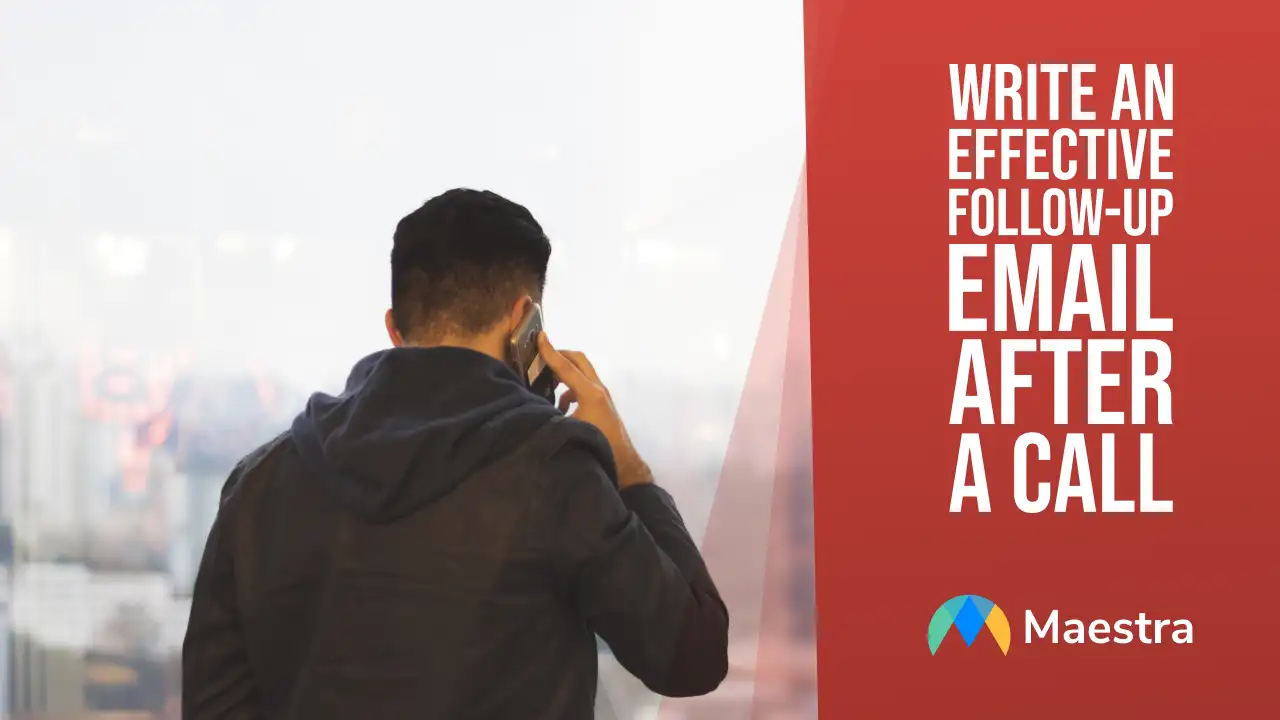Write an Effective Follow-Up Email After a Call

Take Notes During the Call
Before you can jump into crafting a follow-up email, you’ll need notes. This way, you can refer to specific parts of the conversation and be sure to cover any important points (like questions the lead asked). Detailed notes help you craft a personalized and effective email. But as important as notes are to have, they’re not the easiest to gather. Trying to jot down everything important while also facilitating the call is a struggle. Not to mention, typing or scribbling can distract your lead from the call. The great news is that Maestra streamlines the process for you. Instead of distracting yourself during the call, simply use Maestra to automatically generate notes from the discovery call. You’ll get a complete timestamped transcript to use for follow-up email notes and much more.Use Maestra for an Automatic Phone Meeting Transcript
Gathering notes from your discovery call is easier than every with Maestra. Using the automatic transcript generator, quickly convert audio to text. Here’s how it works:- Record your call. Make sure to get permission from the call attendee and let them know you’ll record the call before doing so.
- Head to Maestra’s audio-to-text converter. If you have a video file instead, the video-to-text converter is a great option!
- Upload your audio or video file.
- Press the button to get started.
- Receive your complete transcript within minutes.
- Edit and export your transcript for detailed meeting notes!
